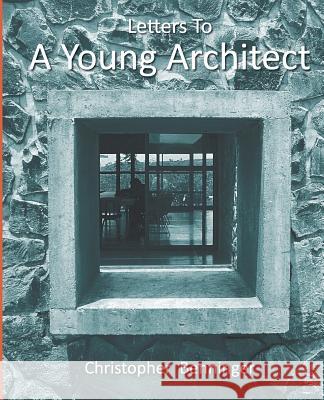Letters to a Young Architect » książka
Letters to a Young Architect
ISBN-13: 9781461123958 / Angielski / Miękka / 2011 / 302 str.
Amongst the Top Ten Best Selling Books, Non-Fiction in India for 18 running weeks, this is a must read for the layman and the architect alike. Born an American, celebrated in India as a leading architect and urbanist, Benninger possesses a sense of timelessness that spreads across oceans and over mountains. Letters to a Young Architect is a sensitive memoir of his life in India and his personal concerns about architectural theory and contemporary urban issues. The book represents a mature reflection of lessons learned along an ardous journey. Through the medium of articles and lectures presented over the past decade, a lucid collection of essays emerges to testify to the commonality of the human condition. The book documents a fifty-year passage, beginning in America in the 1960's, studying under the great master Jose Luis Sert, and continuing in the Indian subcontinent through a critical period of India's ascendance. This is a collection of autobiographical narratives and ideas reflecting a man's journey of the spirit from America to India and the philosophical considerations that matured from his experiences. Letters to a Young Architect reflects on the role and the direction of architecture in framing a new man and a new society in the new millennium. He notes his encounters with gurus like Walter Gropius, Arnold Toynbee and Buckminster Fuller and the manner in which their personal passion for humanity shaped the lives of others. His journey is not only stories from the dusty roads he travelled on, but also of the passions and emotions of those he met along the way. Benninger is a strong believer in tradition, in gurus and in students and in a linage of values, ideals, principles and practices that have evolved and matured from generation to generation. His "Principles of Intelligent Urbanism" have provided an alternative to a new generation of urban planners and designers, who feel the fatigue of imported ideas impaled over the global landscape. Benninger is concerned with the education of architects; the very nature of architecture itself; and, the role of urbanism and planning in the creation of a new society. The role of Indian masters, like Balkrishna Doshi who guided him in his searches, are touching tributes to the Indian "Guru-Shishya" tradition. Benninger has a clear agenda to create human scale relationships within his spatial arrangements; to link indoor activities with exterior settings, utilizing the salubrious Indian climate to create live-work spaces; to employ local motifs, signs and symbols to bring meaning to the environment; to reduce energy consumption in both the construction and the life cycle operation of his buildings; to celebrate traditional materials and crafts; and to use the "charisma" of architecture to bring a sense of identity to a place and its inhabitants. His narrative presents a language that lies between American ideals found in its wooded, Arcadian landscapes, and sacred notions enshrined within Asian courtyards, generating a unique approach to architecture and place making.
Zawartość książki może nie spełniać oczekiwań – reklamacje nie obejmują treści, która mogła nie być redakcyjnie ani merytorycznie opracowana.











